A guide to camera Language
Extreme long shot:
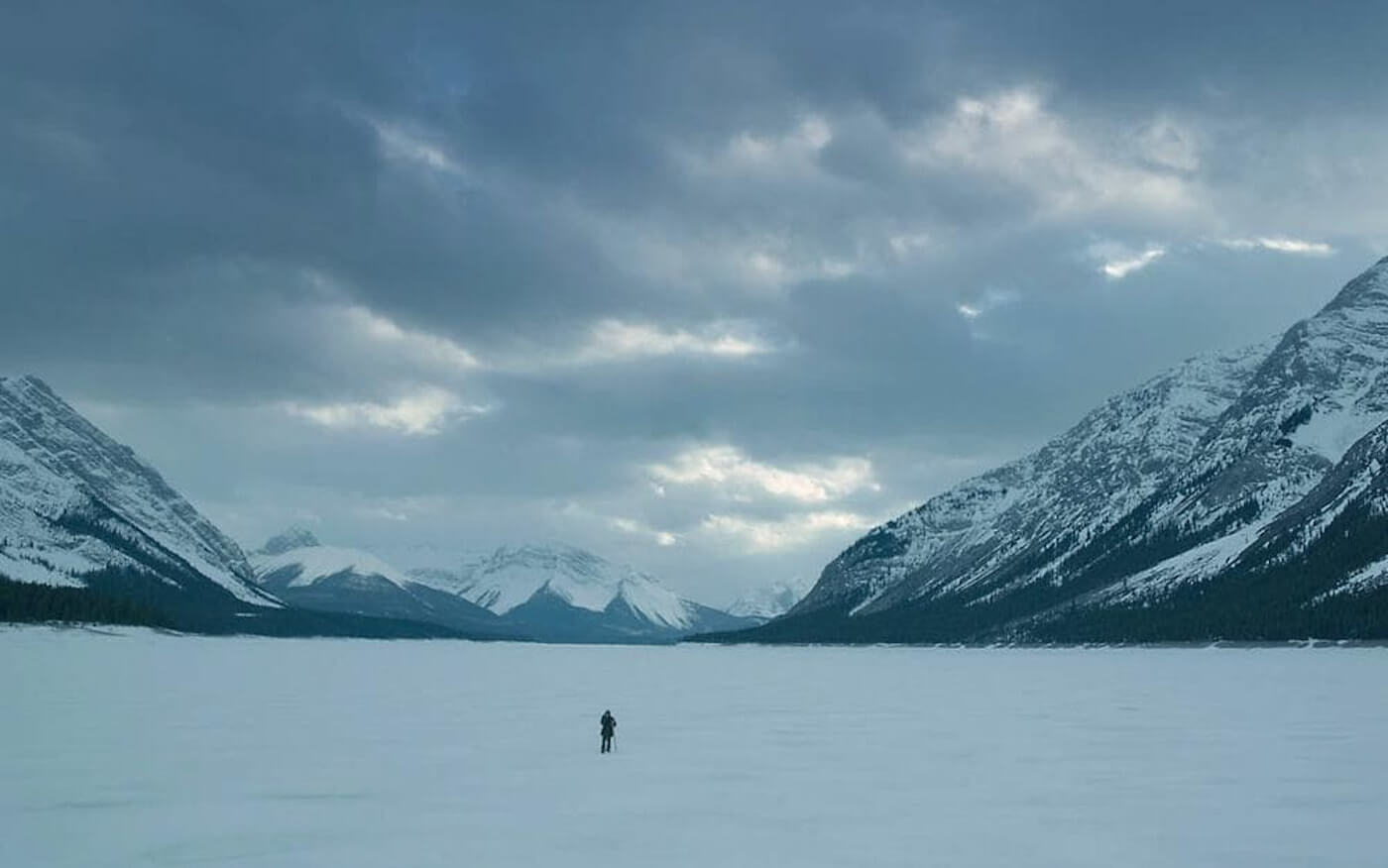
The Revenant:
This example of an extreme long shot is used to emphasize the vast size of the landscape in comparison to the small silhouette of a person that we can see in the middle of the snow. By comparing the person to large amounts of snow, mountains and the sky the director has been able to achieve an inferior persona juxtaposed by the power of mother nature. Furthermore, the fact that the main colours in this image are all blue/grey toned connotes a sense of hopelessness or fear which adds to the powerful ambience created through the use of an extreme long shot.
Long shot:

Cleopatra:
The use of a long shot in this scene provides the audience with an expansive view of the set and allows us to see all the characters as well as the location which in this case seems very important as it is clearly historical. Furthermore, this is taken at a high angle which shows us that we should be focusing on the people in the scene as the camera is tilting towards the crowd who are bearing flags which gives us a better view of them and perhaps any action or important events that are about to take place and is therefore more entertaining for the audience as they become more intrigued after seeing the surroundings in their entirety.
Medium long shot:
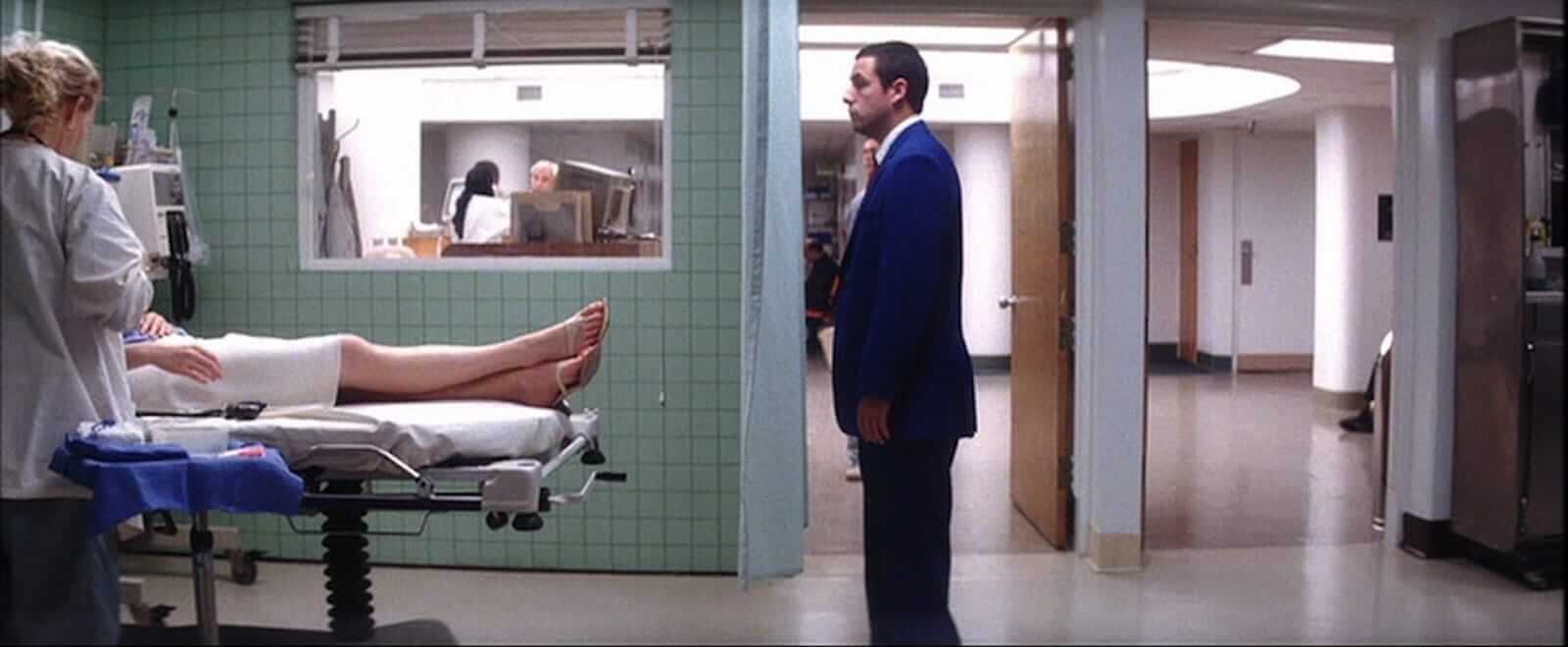
Punch drunk love:
Medium long-shots frame the subject from the knees-up therefore allowing us to see some of the location whilst being slightly closer to the characters face, so we can see their expressions more. Moreover, the fact that this shot shows us both the location and the majority of the man's body, but we can only see half of the women's body and not her face adds suspense as we want to know the one thing that we can't see at this point which is her face.
Medium shot:

Dark knight rises:
The medium shot is quite different to a medium long shot as it reveals the subject in more detail, usually from the waist up therefore showing both the character and their surroundings. In this case, being able to see the character's reaction is important as well as seeing the suit in the background to add to the suspense and give the audience an insight into what might be going on in the background. This allows the audience to get a more detailed look into what the scene is showing them.
Medium close-up:

13 reasons why:
Medium close-ups frame the subject from the chest up, in the example above you can clearly see Clay's face however he is still fairly distant so the audience is able to see his shoulders, neck and the background which in this case is blurred - therefore re-directing our focus onto Clay's face which seems confused and shocked in this scene which we can infer is what the director wanted us to recognize so that we know the protagonists emotions at this point. This shot therefore provides the audience with a better understanding of the character's emotions and allows them to focus on conversations or reactions rather than backgrounds or action.
Close-up:
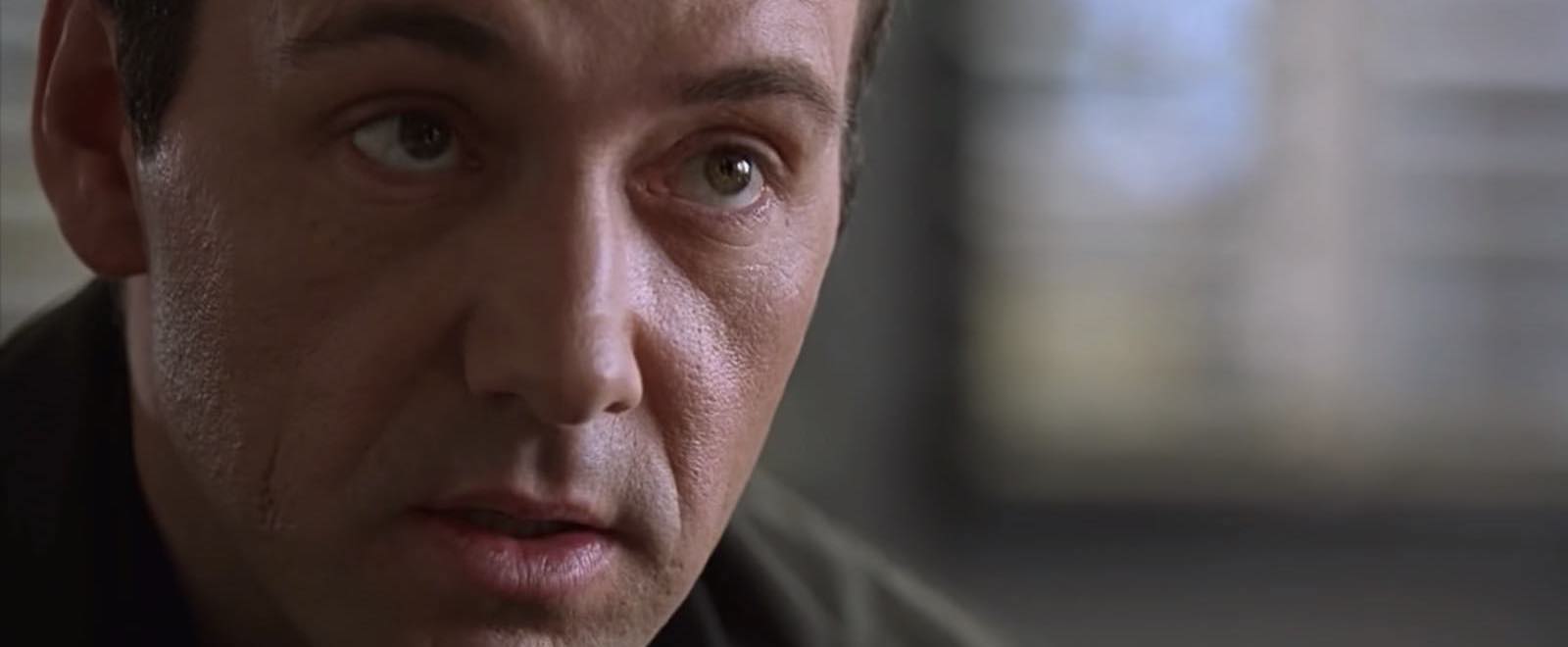
The usual suspects:
Close-up shots are often used to reveal the subjects emotions and reactions, they are used during important scenes when the director wants the audience to know how the character is feeling or perhaps to use their facial expressions to increase tension, suspense or to foreshadow events to come. Often directors will use close-up shots to reveal how a character is feeling at a specific point, they can be very important when it comes to playing out the plot of the film.
Extreme close-up:
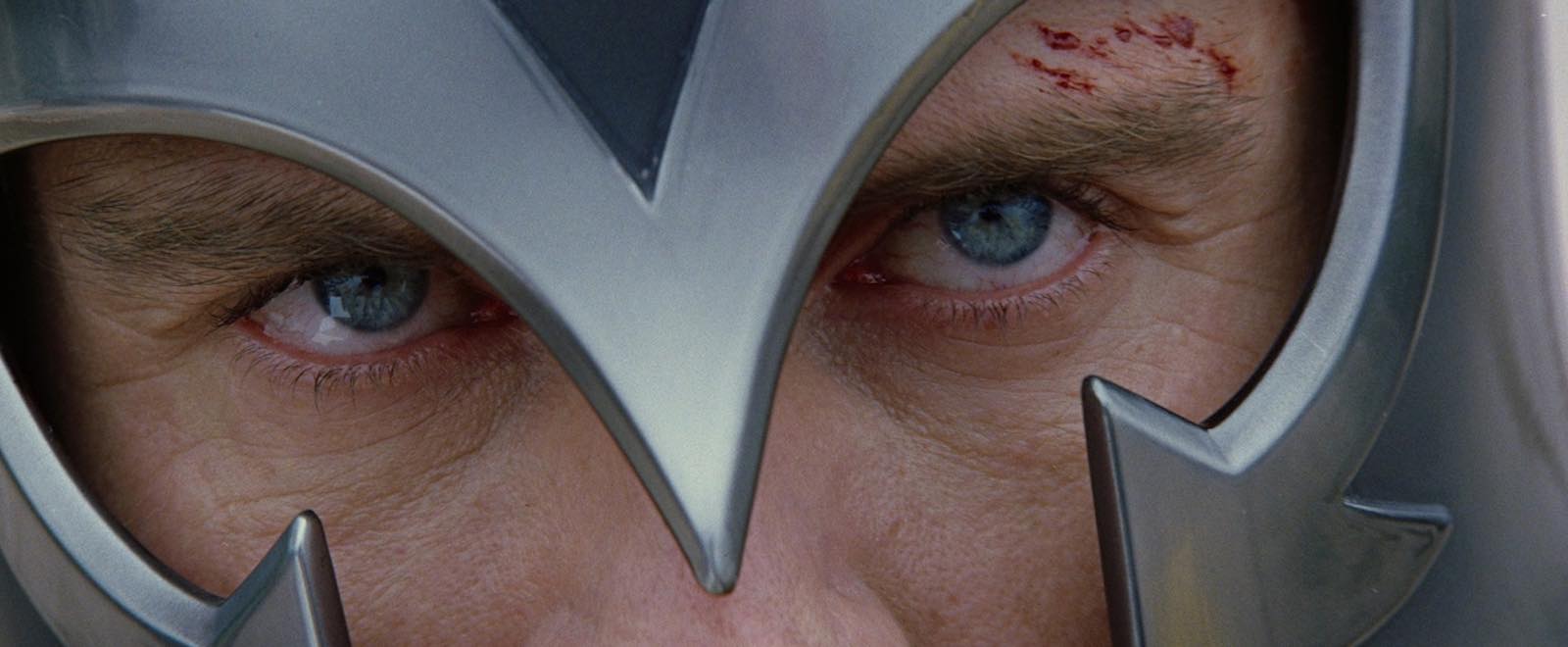
X-men first class:
An extreme close-up is a shot which fills the entire camera frame with a specific subject, in this example you can clearly see the character's eyes which builds tension as this is clearly an important battle scene as shown by the determined look in his eye and the fact that we can only see his eyes, his mask and a cut on his head, emphasizes that this extreme close-up is used to create an atmosphere full of suspense.
High angle shot:
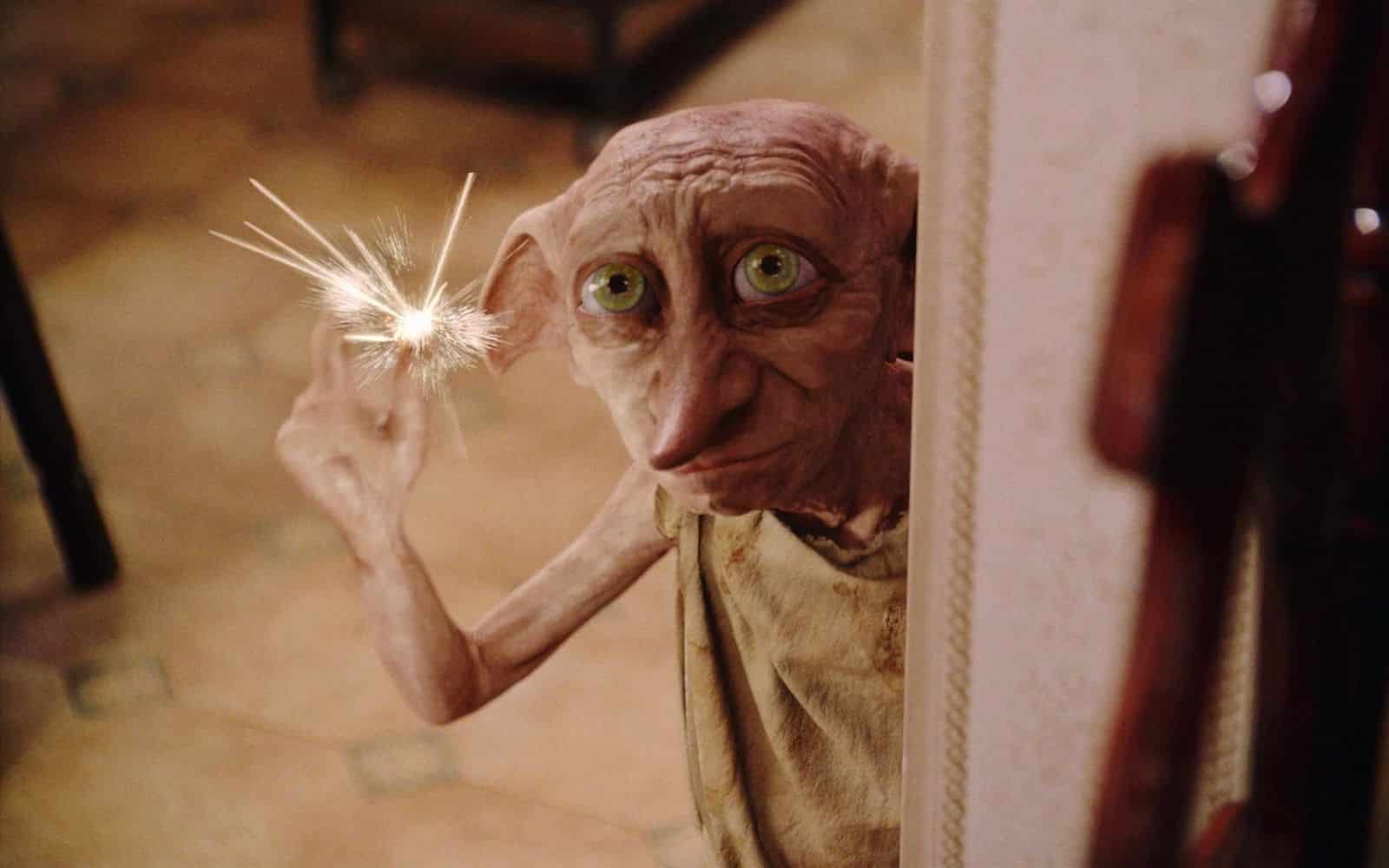
Harry potter and the chamber of secrets:
In the image above the director has used a high angle camera shot to show that Dobby is inferior to the witches and wizards around him, the high angle shot is also a medium shot which allows us to see the rags he is wearing, once again adding to the portrayal of Dobby as inferior to those around him and suggesting to the audience that he is not as wealthy as his superiors yet we see in this scene that he is still attempting to help the wizards, harry in particular.
Low angle shot:
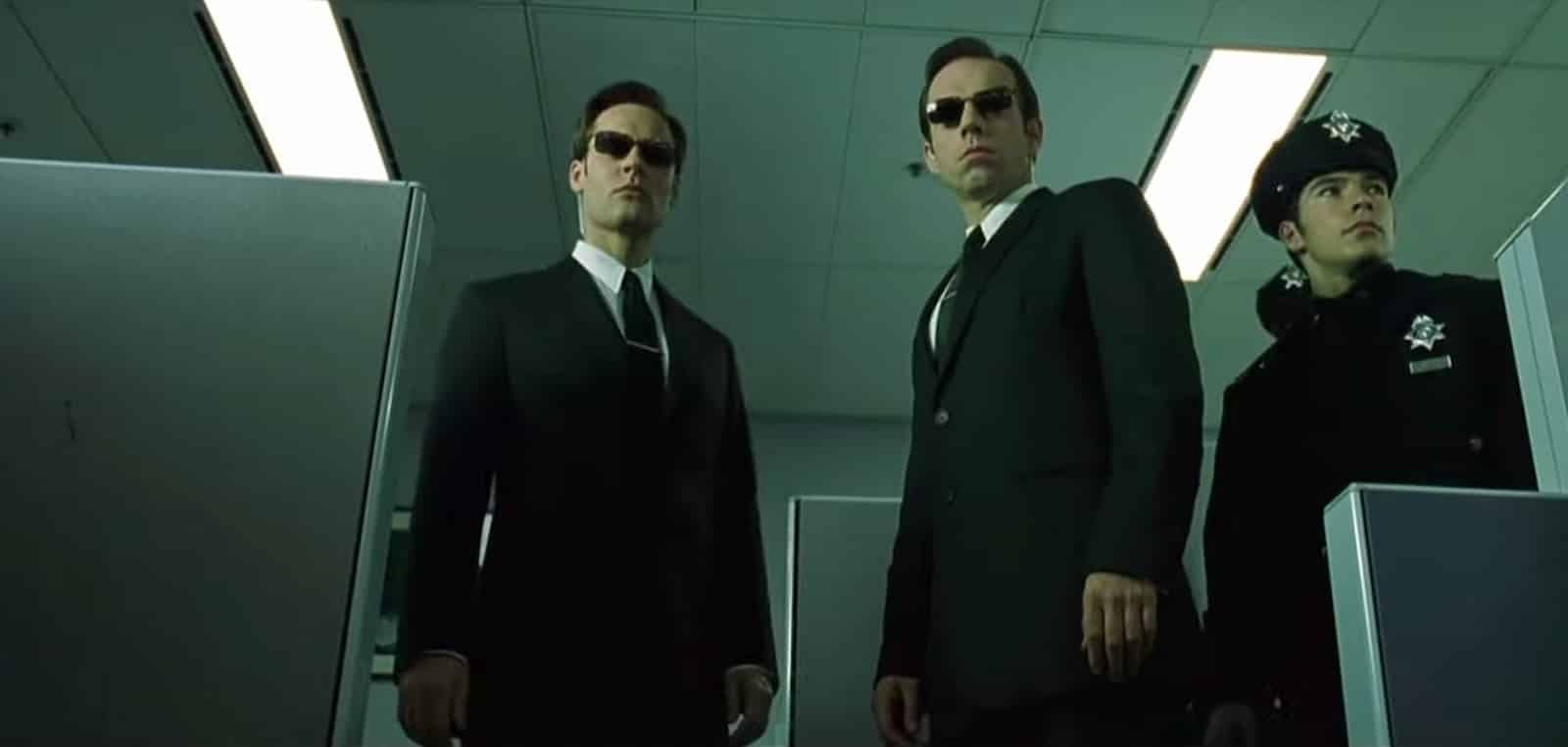
The matrix:
Through the use of a low angle shot in this scene from the matrix, it is clear to see that the agents are superior as we are forced to look up at them which expresses their status and importance, particularly through their appearance in this scene as they are wearing suits, ties and sunglasses which makes them seem even more important and as though they are in control. The lighting in this shot allows the director to create a mysterious feel, especially thanks to the low angle shot which adds to the general mood of suspense and superiority.
Eye-level shot:
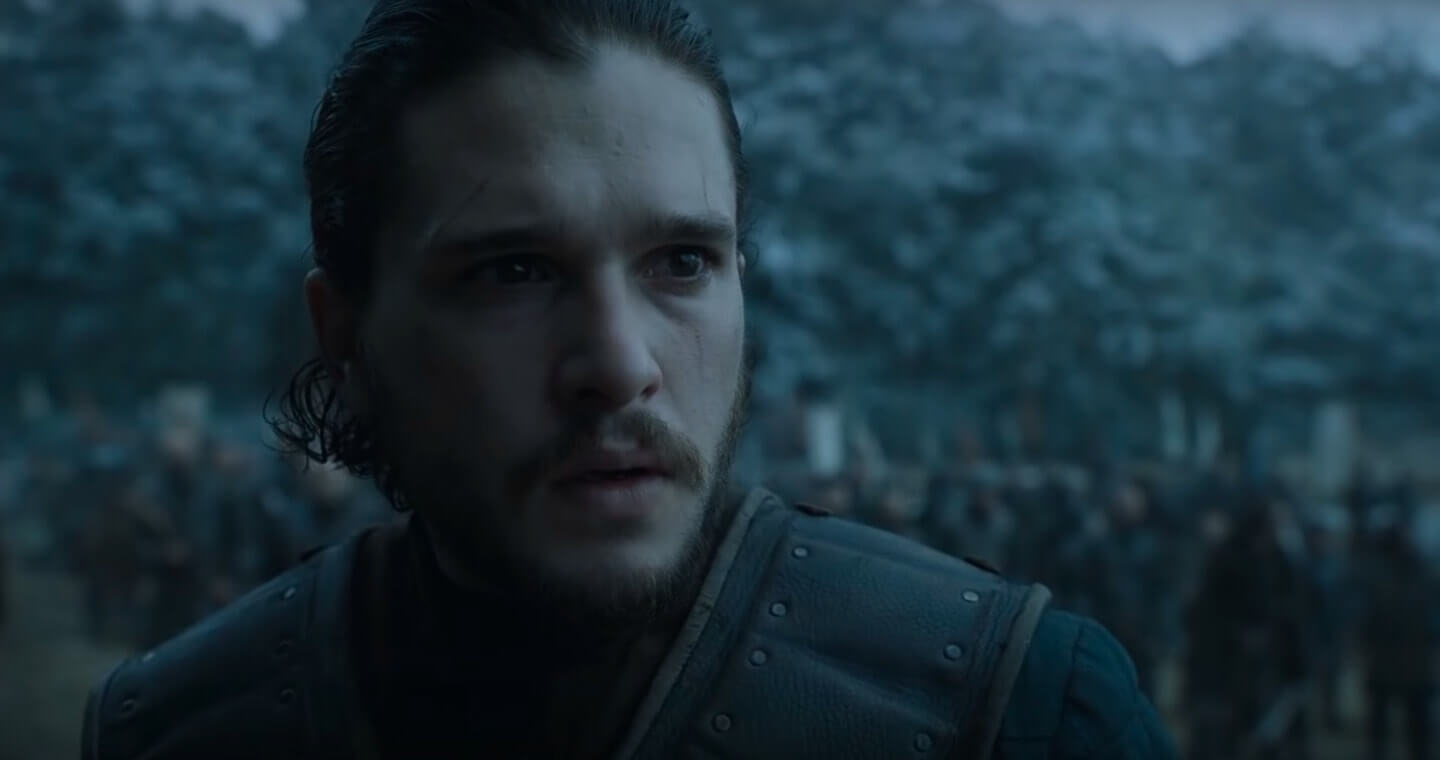
Game of thrones:
Here, the director has used a close up as well as an eye-level shot to show the audience Jon Snow's concern and emotions in this battle scene. By using an eye level shot we are able to focus on Jon and gain a sense of familiarity from the scene as he is looking at eye-level towards the audience which makes him seem not superior or inferior but somewhat equal to the audience.
Over the shoulder shot:
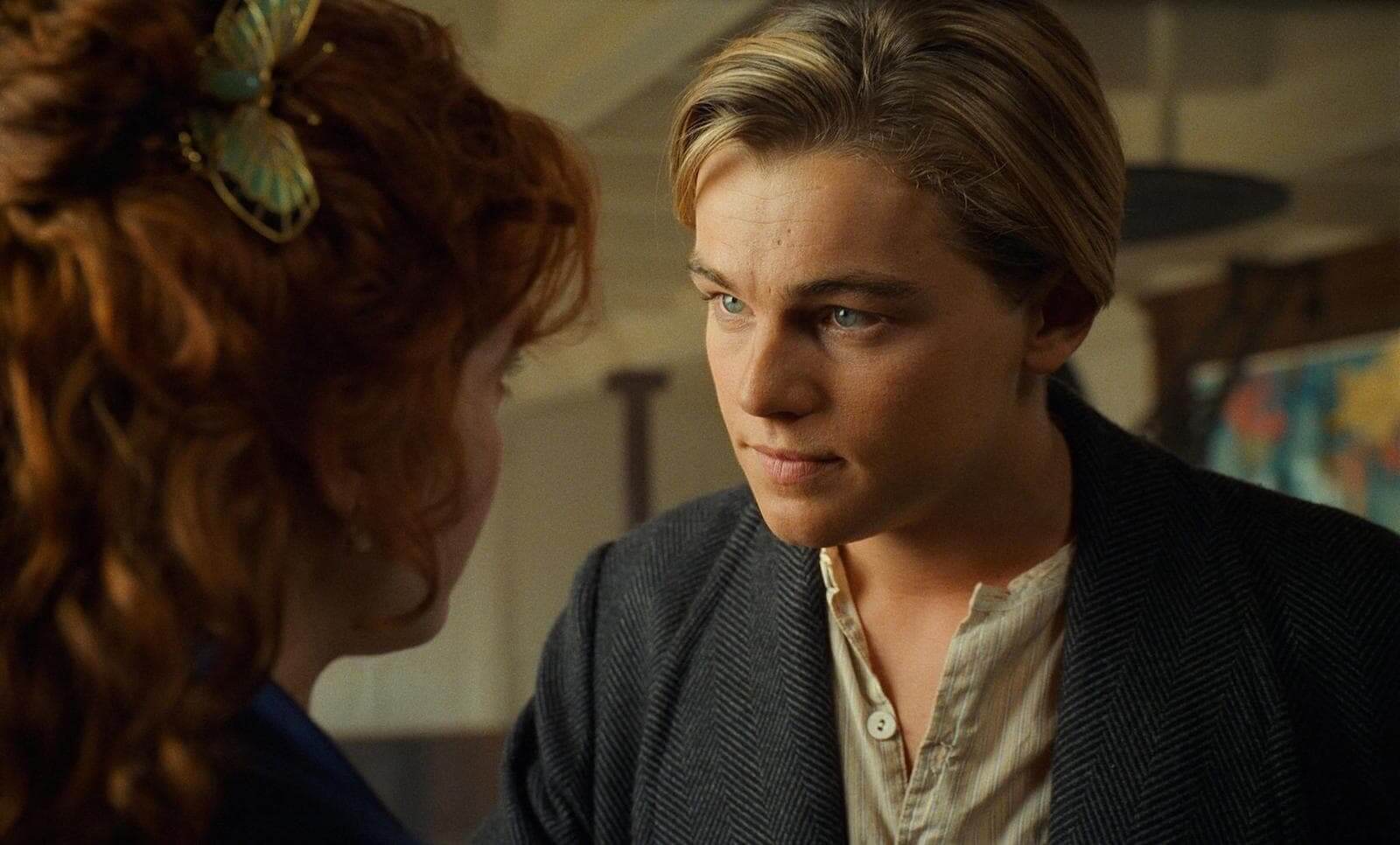
The titanic:
In this over the shoulder shot it is clear that our focus should be on Jack as he stares into Rose's eyes this is meant to be an intimate and loving scene, the fact that we are focusing on his emotions makes the scene seem important as we are gaining a sense of understanding of the pair's obvious connection which sets the theme for the entire film, moreover, the over the shoulder shot evokes a sense of familiarity between the two protagonists which is extremely important for the plot of the film.
High/canted angle:
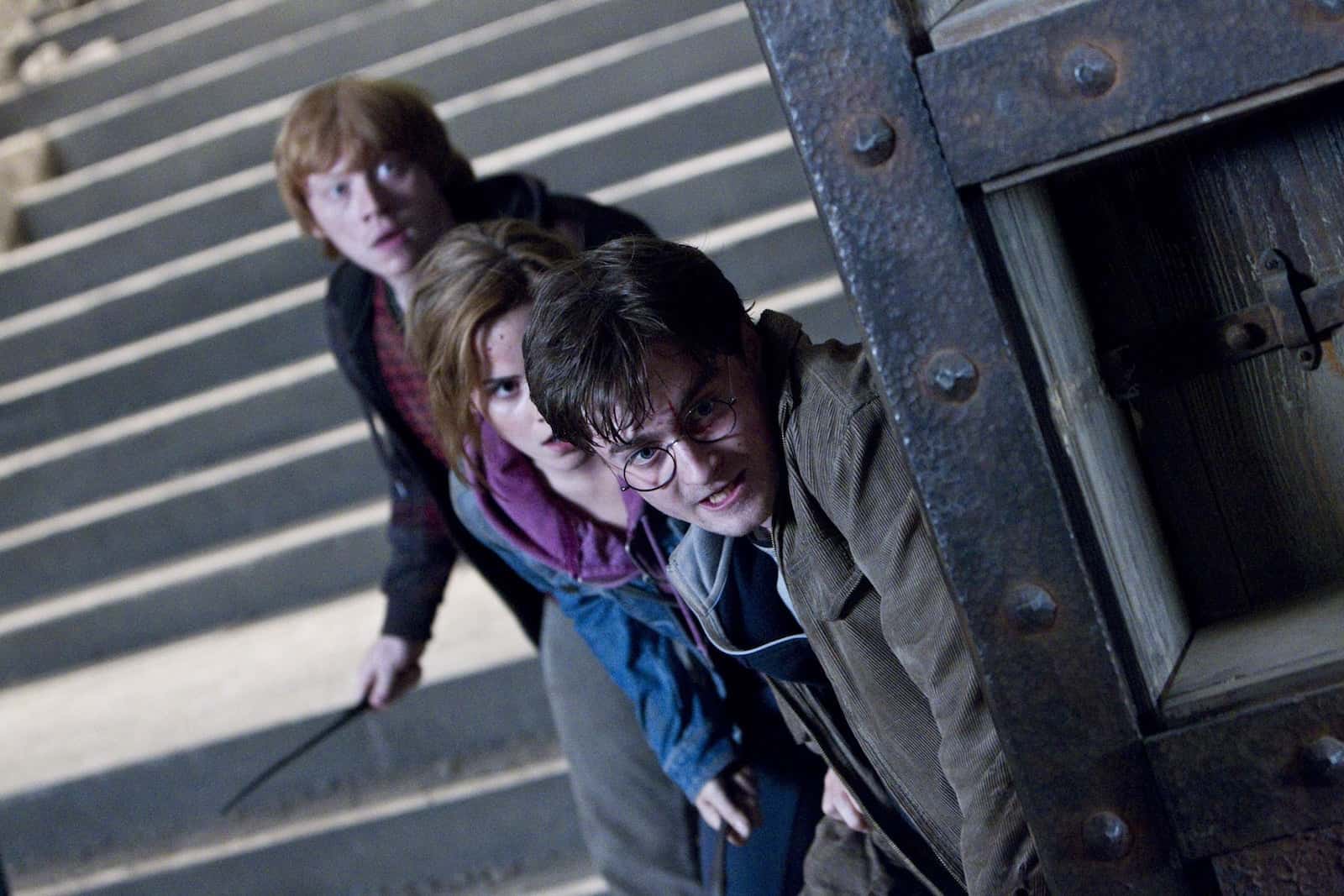
Harry potter and the deathly hallows:
In this high angle shot we can see Harry, Hermione and Ron peering around the door during their final battle against the dark wizards, from the fact that the shot is also canted we can infer that this is meant to represent all of the action in their heads at this moment in time as well as the possibility that it could mirror how they have been hurt and everything is sinning/tilting to them as a result of their injuries.
Comments
Post a Comment